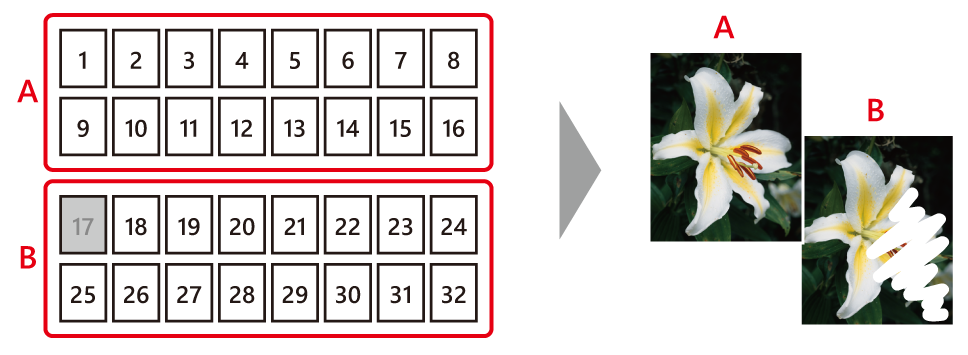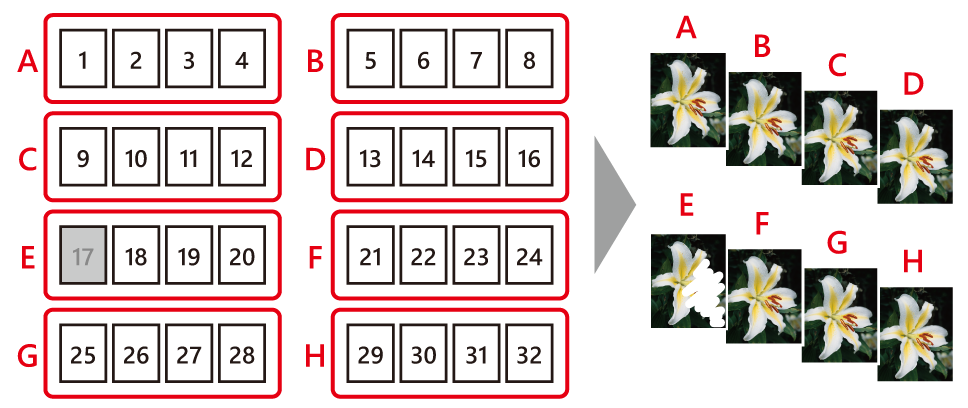Merge Pictures Taken Using Pixel Shift with NX Studio
Merge pictures taken using pixel shift with NX Studio. The software will detect the pixel shift sequence of the selected picture and the pictures in the sequence can be merged into a single file.
Using Pixel Shift Merge
Display the folder containing the pixel shift sequence, and click [Pixel shift merge] in the toolbar.

- The [Pixel Shift Merge] dialog will be displayed where you can choose a series of pictures taken with the camera using [Pixel shift shooting].
In the [Pixel Shift Merge] dialog, adjust settings such as "Merge mode" (number of generated images) and "Chromatic aberration correction" (0Pixel Shift Merge Setting Options).
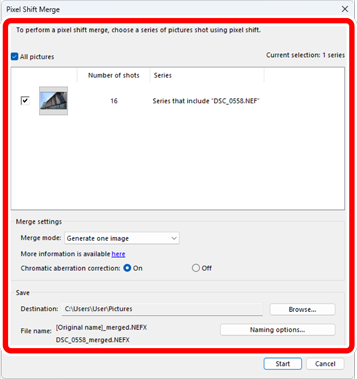
Click [Start] to save merged pixel shift images in the selected destination folder.
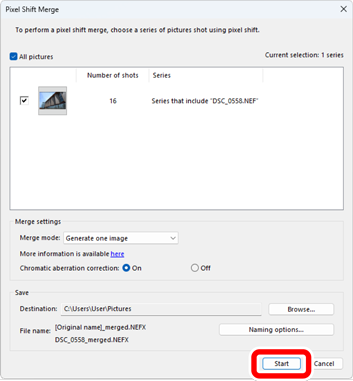
Pixel Shift Merge Setting Options
Set options in the [Pixel Shift Merge] dialog as follows:
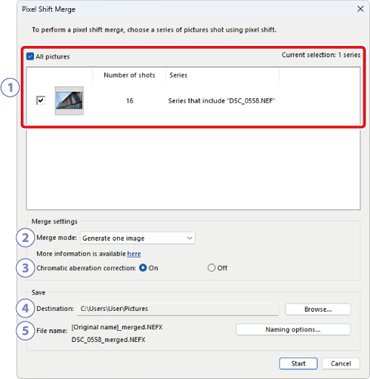
| Option | Description | |
|---|---|---|
| Pixel shift sequence | Select the sequence to merge. If there are multiple sequences in the view area, they can be selected and merged at the same time. |
|
| [Merge mode] | Select the number of images to generate after merging. The number of images depends on the number of pictures to be merged (0Number of Images Generated). | |
| [Chromatic aberration correction] | Select [On] to reduce lateral color aberrations. | |
| [Destination] | Choose the destination folder for the generated images. | |
| [File name] | Name the generated files. Click [Naming options] to select how files are named with prefix and suffix. | |
Number of Images Generated
The number of generated images that can be selected varies as follows according to the number of pictures to be merged:
No. of original pictures No. of generated images Details 4 1 One merge to generate 1 image from 4 pictures. 8 1 One merge to generate 1 image from 8 pictures. 2 Two merges to generate 2 images from 4 pictures. 16 1 One merge to generate 1 image from 16 pictures.
- The resulting height and width are double those of the original pictures.
4 Four merges to generate 4 images from 4 pictures. 32 1 One merge to generate 1 image from 32 pictures.
- The resulting height and width are double those of the original pictures.
2 Two merges to generate 2 images from 16 pictures.
- The resulting height and width are double those of the original pictures.
4 Four merges to generate 4 images from 8 pictures. 8 Eight merges to generate 8 images from 4 pictures. - When multiple sequences of pictures taken using pixel shift are selected at the same time, it is only possible to generate a number of images that are available to all selected sequences. For example, if a sequence of 8 pictures and a sequence of 16 pictures are selected at the same time, only 1 image can be generated; if a sequence of 8 pictures and a sequence of 32 pictures are selected at the same time, you can select whether 1 or 2 images will be generated.
The read/write speed of the hardware greatly affects the processing time of a pixel shift merge. A fast read/write storage device such as an SSD is recommended.
When the Merged Image Is Partially Disrupted
If the camera, the subjects, or the light source moves during a pixel shift shooting, the merged image may be partially disrupted. The following figure shows how 32 pictures are merged into a single image.

If a merge includes pictures disrupted, the resulting image will be partially disrupted.
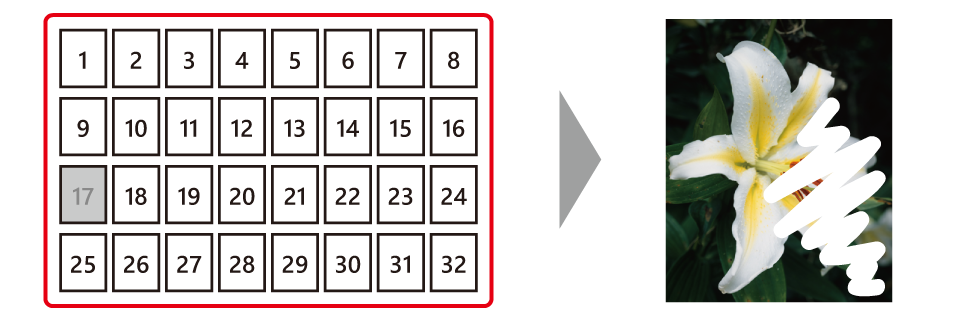
An example of a disrupted merged image caused by a moving subject during the 17th picture.
In these cases, we recommend changing the number of merged images to be generated. Increasing the number of generated images may change the image quality of the merged image, but the merged image can be generated with pictures that do not include the cause of the disruption. Set the number of generated images with [Merge mode] in NX Studio when performing a pixel shift merge. The number of generated images can only be selected if 32, 16, or 8 was selected for [Pixel shift shooting] > [Number of shots] in the photo shooting menu. The relationship between each picture taken with number of shots set to 32 and the resulting merged images is as follows:
| No. of generated images | The relationship between pictures taken and the merged images to be generated |
|---|---|
| 1 |
|
| 2 |
|
| 4 |
|
| 8 |
|
When generating a single image, the merged image is disrupted because all the pictures are used, including those that were disrupted. Generating two images, on the other hand, causes the first merged image to be generated using the first to 16th pictures and the second merged image to be generated using the 17th to 32nd pictures, so the first merged image, which does not include the 17th disrupted picture, will not be disrupted. The desired result is more likely to be achieved by generating a single image that produces the highest image quality first, and if disruption occurs, by increasing the number of generated images in the order of 2 images, 4 images, and 8 images. It is also recommended to always take 32 shots unless there is a particular reason not to.
- When 32 pictures are taken and 4 images are generated, each image is made of 8 pictures, and note the discontinuity of the combination of the 8 picture components to be merged. Consequently, a better result may be obtained by choosing to generate 1 image merging 8 pictures when 8 consecutive pictures are taken in the shortest possible time. Specifically in situations where the brightness changes quickly (sunrise, sunset, etc.), it is recommended to set the number of shots to 8.

